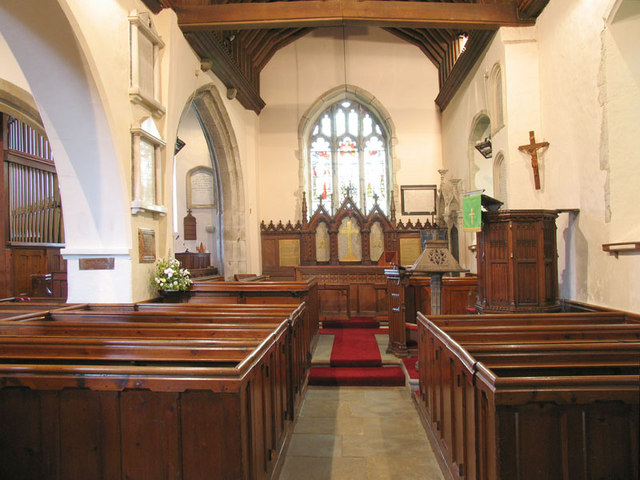St Martin of Tours Church, Detling on:
[Wikipedia]
[Google]
[Amazon]
St Martin of Tours is a  The
The
parish church
A parish church (or parochial church) in Christianity is the church which acts as the religious centre of a parish. In many parts of the world, especially in rural areas, the parish church may play a significant role in community activities, ...
in Detling
Detling is a village and civil parish in the Borough of Maidstone in Kent, England. The parish is located on the slope of the North Downs, north east of Maidstone, and on the Pilgrims' Way.
History and features
The ''Cock Horse Inn'' was used ...
, Kent
Kent is a county in South East England and one of the home counties. It borders Greater London to the north-west, Surrey to the west and East Sussex to the south-west, and Essex to the north across the estuary of the River Thames; it faces ...
. Dedicated to Martin of Tours, the building was constructed in the 12th century with 13th and 15th-century additions and restoration carried out in the late 19th century. It is a Grade I listed building
In the United Kingdom, a listed building or listed structure is one that has been placed on one of the four statutory lists maintained by Historic England in England, Historic Environment Scotland in Scotland, in Wales, and the Northern Irel ...
.
 The
The nave
The nave () is the central part of a church, stretching from the (normally western) main entrance or rear wall, to the transepts, or in a church without transepts, to the chancel. When a church contains side aisles, as in a basilica-type ...
and chancel
In church architecture, the chancel is the space around the altar, including the choir and the sanctuary (sometimes called the presbytery), at the liturgical east end of a traditional Christian church building. It may terminate in an apse.
Ov ...
are of early Norman construction and built of flint
Flint, occasionally flintstone, is a sedimentary cryptocrystalline form of the mineral quartz, categorized as the variety of chert that occurs in chalk or marly limestone. Flint was widely used historically to make stone tools and sta ...
with a plain tiled roof. The aisle
An aisle is, in general, a space for walking with rows of non-walking spaces on both sides. Aisles with seating on both sides can be seen in airplanes, certain types of buildings, such as churches, cathedrals, synagogues, meeting halls, par ...
to the north of the nave is Early English and is constructed of flint and local rag-stone
Rag-stone is a name given by some architectural writers to work done with stones that are quarried in thin pieces, such as Horsham Stone, sandstone, Yorkshire stone, and the slate stones, but this is more properly flag or slab work. Near London ...
. It was enlarged in the 1880s. The adjacent chapel
A chapel is a Christian place of prayer and worship that is usually relatively small. The term has several meanings. Firstly, smaller spaces inside a church that have their own altar are often called chapels; the Lady chapel is a common ty ...
on the north side of the chancel and the porch on the south side of the nave are Perpendicular Gothic. The tower is built in two stages of galletted rag-stone with diagonal corner buttress
A buttress is an architectural structure built against or projecting from a wall which serves to support or reinforce the wall. Buttresses are fairly common on more ancient buildings, as a means of providing support to act against the lateral ( ...
es. The timber- shingled broach spire was added in 1861 by R. C. Hussey. The roof structure to the chapel is original, but the rest of the roof was replaced in the 19th century.
The church windows are of varying sizes and periods although mostly perpendicular in style. Over the doorway on the west side of the tower is a large rectangular three-lighted perpendicular window added in the 19th century. The windows to the nave, aisle and chapel are mainly two-lighted in design. Those to the south-east and east of the chancel and three-lighted. Internally, the nave and aisle are separated by a pair of wide plain arches and the chancel and chapel by a single arch.
The large twelve-sided font is early and plain and stands on a 20th-century base, having once been built into the wall of the tower. An ornately carved four-sided oak lectern dates from 1340–50. It probably came from Boxley Abbey
Boxley Abbey in Boxley, Kent, England was a Cistercian monastery founded c.1146 by William of Ypres, leader of King Stephen's Flemish mercenaries, and colonised by monks from Clairvaux Abbey in France. Some of its ruins survive, some four miles ...
and has been described as "the finest medieval fitting in any parish church in the county". The church's pipe organ dates from the 1850s and was brought from the Congregational Church in Maidstone in 1973.
The churchyard contains a headstone and a table tomb that are Grade II listed.See also
*Grade I listed buildings in Maidstone
There are 42 Grade I listed buildings in Maidstone. The Borough of Maidstone is a local government district in the English county of Kent. The district covers a largely rural area of between the North Downs and the Weald with the town ...
References
{{DEFAULTSORT:Detling, St Martin of Tours Church Borough of Maidstone 12th-century church buildings in England Grade I listed churches in Kent Church of England church buildings in Kent Diocese of Canterbury